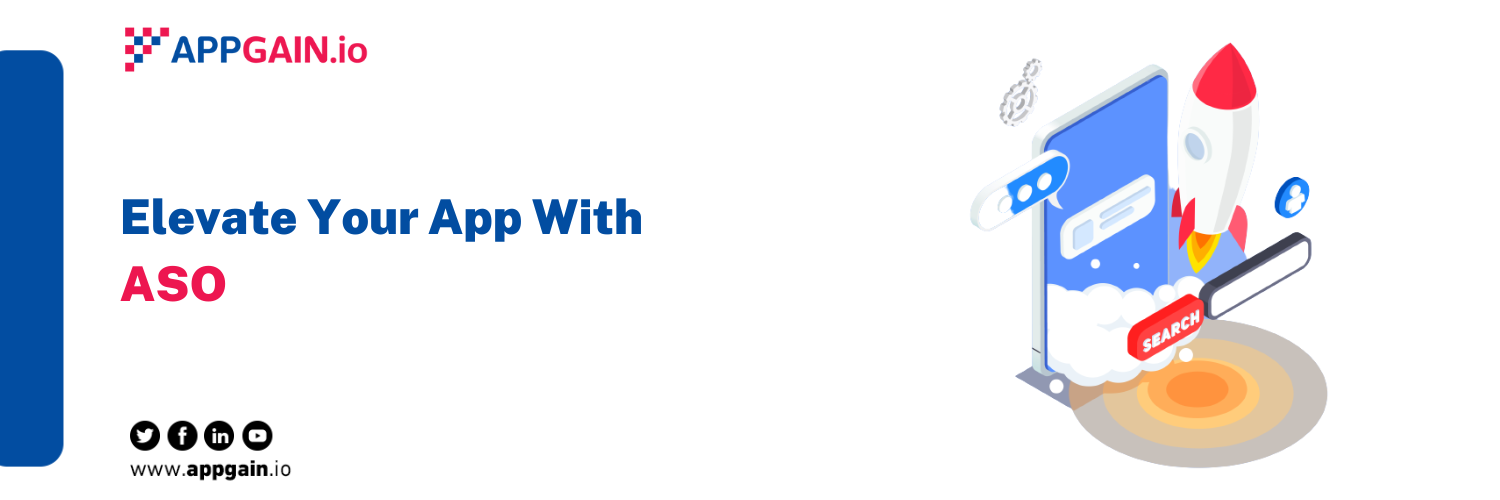The world is digitizing rapidly, so going online is no longer an option nor merit. Because whatever your business is, there’re competitors, so what to do?
You’re probably familiar with the term SEO or Search Engine Optimization. SEO certainly provides some impressive results, but what is also super achieving is the Apps version of it. App Store Optimization, or what we call ASO.
What is App Store optimization?
App Store Optimization, or ASO, is the science of improving the performance of the App Store menu. It’s basically about applying the scientific method to mobile key performance indicators (KPIs) associated with app stores.
ASO’s three main aspects:
- Improved conversion rate
- Improve keywords/improve detectability
- Measurement
ASO’s key performance indicators usually are:
- Number and quality of installation
- Number of App Store appearances and grade
- App Store Conversion Rates
These three indicators are the heart of ASO. Each has evolved into its specialty and practice.
Why is ASO So Important For Your App?
- Getting ASO right gives companies an additional advantage. There are about 2 million apps in the Apple App Store and more on Google Play, with new apps added daily. And a large number of mobile apps, both in gaming and non-gaming, is decreasing, which can harden the challenge for many apps.
And since paid UA (user acquisition) is not a magic bullet for success, understanding users and their motivation to install an app or game is essential. Without it, any paid UA can generate short-term success with no sign of loyalty or sustainability.
On the other hand, companies that get UA appropriately for their apps are the only companies with a real competitive advantage in app stores. And yes, by proper UA we mean ASO.
- App stores have become the only place to get the distribution feature.
App stores are full of great games and apps that haven’t got more than a few thousand installations. The problem of competition in app stores today is redoubled.
It’s not about the app.
With the continuous rise in the value of producing apps, it has become difficult to discern your product in terms of usability only – by improving the user experience/user interface. A competitor may always show up with a good enough job of creating a viable alternative.
It’s also not about UA.
If the product itself is not unique enough to succeed based on its advantages, many companies resort to the UA experience as a differentiator.
Read here, 7 Challenges that face e-commerce stores.
So yes, it’s mainly about App Store Optimization!
App Store Optimization (ASO) is undoubtedly the new trend to improve access to applications in the spotlight. Enhancing the App Store performance is one of the most effective and ignored marketing strategies for mobile app developers.
Forrester reports indicating that 63% of apps are discovered through searches in the App Store. According to the latest trends, users tend to search mobile apps using keywords. At this point, ASO will direct users to your product and make it stand out.
Get to know more about ASO and its Importance to mobile marketing
Common Mistakes In App Store Optimization
Understanding ASO and knowing how to apply it is only the beginning. There can be many mistakes and pitfalls that one must watch to achieve better results.
Not using keywords in the app name, subtitle, or short description
This, by far, is the most common and destructive error. Apple and Google put a lot of weight on keywords that appear in the name and subtitle/short description of apps.
Some developers like to keep their apps “clean” and use only the subtitle. This means that the search algorithms won’t have anything to go through, so they will only show your app when you search by name, failing the chance of organic downloads.
Fix this clear and straightforward – once you select the keywords you want to improve, use them in both name and subtitle.
Not enhancing your keywords list
Using only branded keywords is another common app store optimization mistake, if you do not use non-trademark keywords, you will lose loads of potential traffic. Branded keywords contain brand names like Adidas training, Verv, and Google fit. Non-branded or general keywords are search queries without a company name, for example, fitness, weight loss, exercise, etc.
Knowing how to optimize or improve your keywords is not that hard. For example, App Store Connect has a keyword inventory where you can enter keywords to help Apple’s algorithm figure out keywords relevant to your app. Apple gives priority to keywords from the menu, so not taking advantage of these improvements means you’re missing possible downloads.
Going with a non-optimized long description
Unlike Apple, Google doesn’t give developers an easy way to advertise a keyword menu. Instead, Google reads directly from the app name, short description, and long description.
Google’s algorithm determines what your app does by reading its long description and searching for the most frequent words. So, a good organic description should repeat the words that describe the app’s features frequently and use strong industry keywords.
Judging the keywords before using them
Keywords are the cornerstone of a good ASO. Some keywords you may think are relevant and use but end up discovering those keywords don’t get enough traffic or are too competitive.
To avoid this common app store optimization pitfall, you should evaluate your keywords before using them. There are two things you should look for:
- Keywords that get search traffic: look at the degree of popularity of keywords and take the keywords with the highest popularity.
- Keywords in which the best results get a similar number of ratings to your application
Optimizing only once
Some developers search for keywords and enhance, but only once. For some, the first app store optimization can work and enhance the app download, but mainly, ASO is an iterative practice. It needs frequency to maintain success.
Not watching competitors
Another way to stay on top of the erratic search trends is to keep an eye on your competitors. Your competitors will most likely iterate and experiment with optimizing their app store, giving you new ideas and keywords to optimize yours.
Following your competitors gives you an idea of what works for them and what doesn’t, so you can learn faster and get new ideas for your applications.
App Store Optimization can be a bit tricky. That’s why it needs an expert or a savvy mobile marketing tool!
You can benefit from Appgain.io ASO and other mobile app marketing features by requesting a demo.










